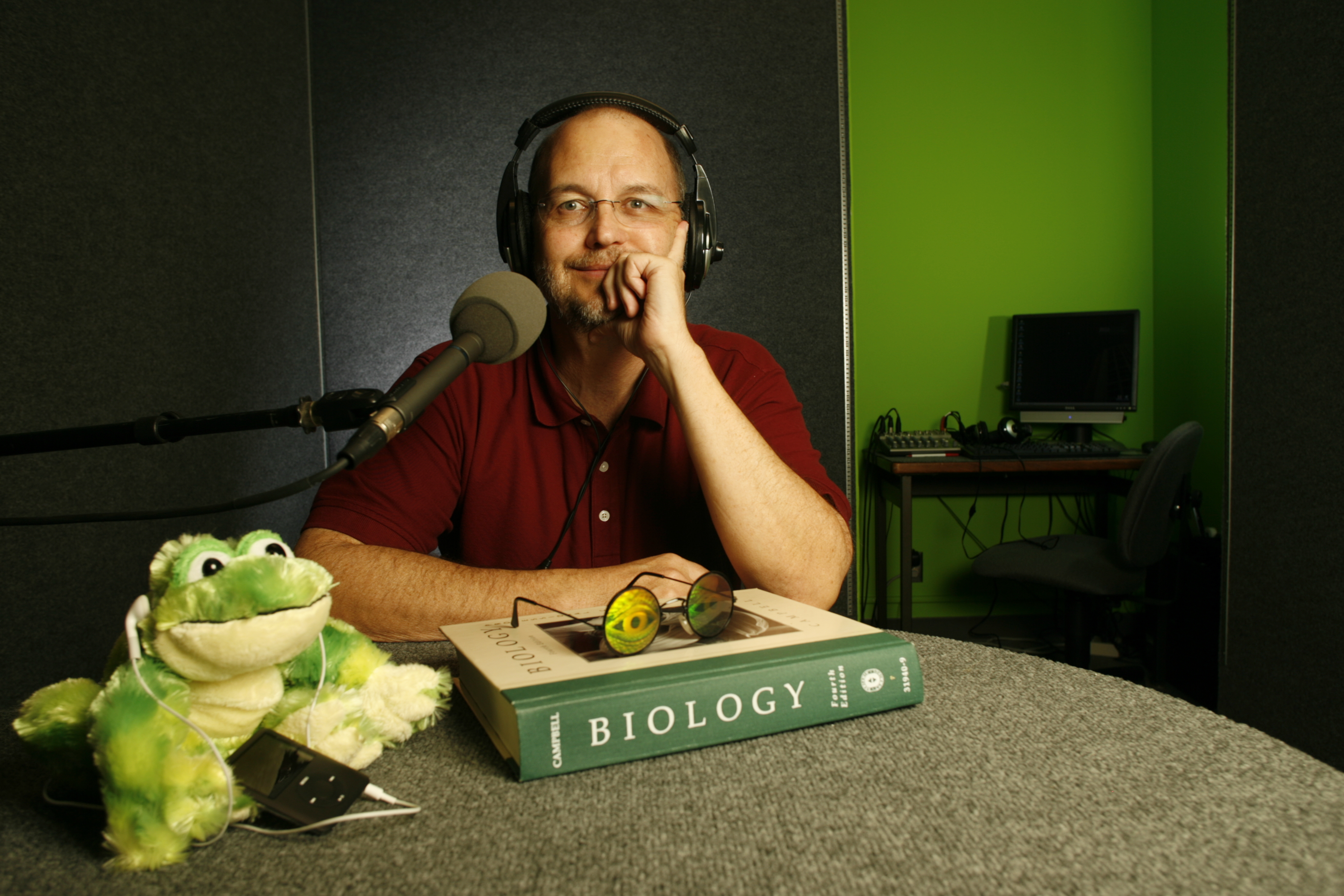We all want to be on top.
And in the online realm of search-engine optimization (SEO), that means crowning a topic field on the world’s most popular search engine.
It’s one of the reasons Arizona State University's Charles Kazilek smiles when he talks about his longtime online learning resource Ask a Biologist.
Type a science query — like, say, “Is a butterfly’s brain the same as the one it had when it was a caterpillar” — into Google and you’ll often see a results page that starts with an answer from Ask a Biologist, ahead of links from National Geographic, The Smithsonian or even the online mega-site Reddit.
It’s a cool feat — and major bragging right, one that’s built on smart SEO, a large online footprint and the ability to craft queries that people care about. But there’s also something else to consider: Ask a Biologist preexists Google’s search engine.
Yes, Kazilek’s brainchild has been around since 1997, one year before Googling became a word that’s as much fun to say as it is to do.
Since then Ask a Biologist has served answers to more than 34,000 biology queries and filled more than 6,000 pages with questions answered.
“So why do they come to us,” said KazilekKazilek is also a senior research professional in the School of Life Sciences; which is part of ASU’s College of Liberal Arts and Sciences., the chief technology innovation officer in the Office of the University Provost. “Because there’s information out there that is out of date. Or in the world of science it's not uncommon to have more than one theory, especially with new fields. And, it's not uncommon for a student to go out and find slightly different answers. So they come to us ... they want clarification.”
As he talks, the pride of accomplishment in Kazilek’s voice is replaced by the earnestness of a teacher who wants to help people understand the natural world.
Ultimately, this is why Ask a Biologist has become so effective: It’s a true teaching tool that strives to enrich its readers the same way a professor aims to enlighten his students.
That’s why the site does more than answer people’s questions about biology. It offers free teaching tools that educators can use in their classrooms and collects podcasts with science experts discussing their specialty fields.
Ask a Biologist wants to help us learn by satisfying those random questions that tumble about in our consciousness.
It’s a function born out of its creator’s own curiosity.
A destination for curiosity
Kazilek grew up in Colorado Springs, Colorado, a city roughly 90 miles south of Denver that’s anchored to the front range of the Rocky Mountains.
Nature dominates this locale where nearly every home has a clear view of the 14,000-foot summit of Pikes Peak, and where the city parks feel more like sprawling nature preserves cut with bike paths and random coyote trails.
So there’s little surprise why Kazilek was drawn to the study of our natural world, as he was raised in a place that grew out of and into nature. But it was a less likely inspiration point for Ask a Biologist — the Colorado Springs public library.
Kazilek said he used to love calling the library’s “hotline,” a phone number that allowed people to ask the library’s employees questions about, well, anything.
“It could be historical. It could be grammatical,” Kazilek said of the questions. “I thought it was really intriguing you could do that.”
There was just one problem: The hotline was available only during the library’s business hours. And, as we all know, the best questions don’t always come to us between 9 and 5.
Years later, when Kazelik was working in ASU’s Department of Zoology and the online age was in its dawn, he was thinking of ways he could help sate people’s curiosity about biology — the questions that people would present to ASU’s biology professors.
He thought back to the Colorado Springs library and that handy hotline. Then he took in the immediacy of the Internet and came up with the idea of a site that could collect, host and answer people’s questions about biology. It had to be smart, but also relatable, and basic enough that middle school students could understand the content.
It started with one page, a basic question-and-answer form.
“When we started we were like, ‘We’re going to open our virtual doors,’ ” Kazilek said of that beginning, 18 years ago.
Charles Kazilek runs the online learning resource Ask a Biologist.
Word spread about Ask a Biologist and the new site was soon getting up to 50 questions a day, from around the Internet, asking everything from the number of cells in a human body to the differences between humans and other animals.
“At the time I was really cautious because I didn’t want to get the word out because I wasn’t sure I could sustain the program,” he said.
Like everything on the Internet, interest levels necessitated the program's continued existence.
Today, that one page has grown to more than 6,000 pages of questions and answers and has averaged 25,000 visitors a day this year. It has also earned that great placement on Google.
“We used to just mull (questions) over, but we don’t do that anymore. Everybody gets out their cellphones and goes to a search engine,” Kazilek said. “Google has pulled Ask a Biologist.”
A number of volunteers — ranging from “pure” scientists to high school teachers — help keep Ask a Biologist alive, with everything from researching information to translating questions and answers into different languages. They’re up to 11 now.
True, the number of questions submitted to the site has dropped over the years, but Kazilek credits that to the obvious fact that there are more sources for information these days. And the search engines have become more powerful.
At any rate, his simple idea has become a wild success.
“I honestly don’t remember what my expectations were,” he said about the early days.
But Kazilek does know what he sees for the future.
A growing legacy
Success often breeds expansion.
And like the proliferation of a popular fast-food chain or the expansion of a surging ant colony, Ask a Biologist will soon be growing.
In January there are plans to launch Ask an Anthropologist, a “spinoff” site that will focus on mining the expertise of ASU’s Institute of Human Origins.
William H. Kimbel, the institute’s director, said they’re excited to continue the Ask a Biologist legacy and take it into the realm of human origins.
“The Ask an Anthropologist website will help teachers and their students understand the latest scientific information on our place in the natural world and make learning about how and when we became human a fun and engaging experience,” Kimbel said.
And if Kazilek’s vision is fulfilled, this won’t be the last spinoff site.
“We could do some phenomenal things in the world of history,” he said. “I could see 'Ask a Composer.' I could see all sorts of things that fit into this realm. Those are the things I’m hoping for … to have these channels that link together so we don’t have duplicate sites and so when a visitor comes to the site with one question we lead them on a journey in learning in so many ways.”
Yes, the educational merit is important. But Kazilek would also like to preserve his excellent standing on Google.
“I’m greedy,” he said. “My goal is to get to a million visitors a month.”
More Science and technology

Diagnosing data corruption
You are in your doctor’s office for your annual physical and you notice the change. This year, your doctor no longer has your health history in five-inch stack of paperwork fastened together with…
Large-scale study reveals true impact of ASU VR lab on science education
Students at Arizona State University love the Dreamscape Learn virtual reality biology experiences, and the intense engagement it creates is leading to higher grades and more persistence for biology…

ASU-led space telescope is ready to fly
The Star Planet Activity Research CubeSat, or SPARCS, a small space telescope that will monitor the flares and sunspot activity of low-mass stars, has now passed its pre-shipment review by NASA.…



